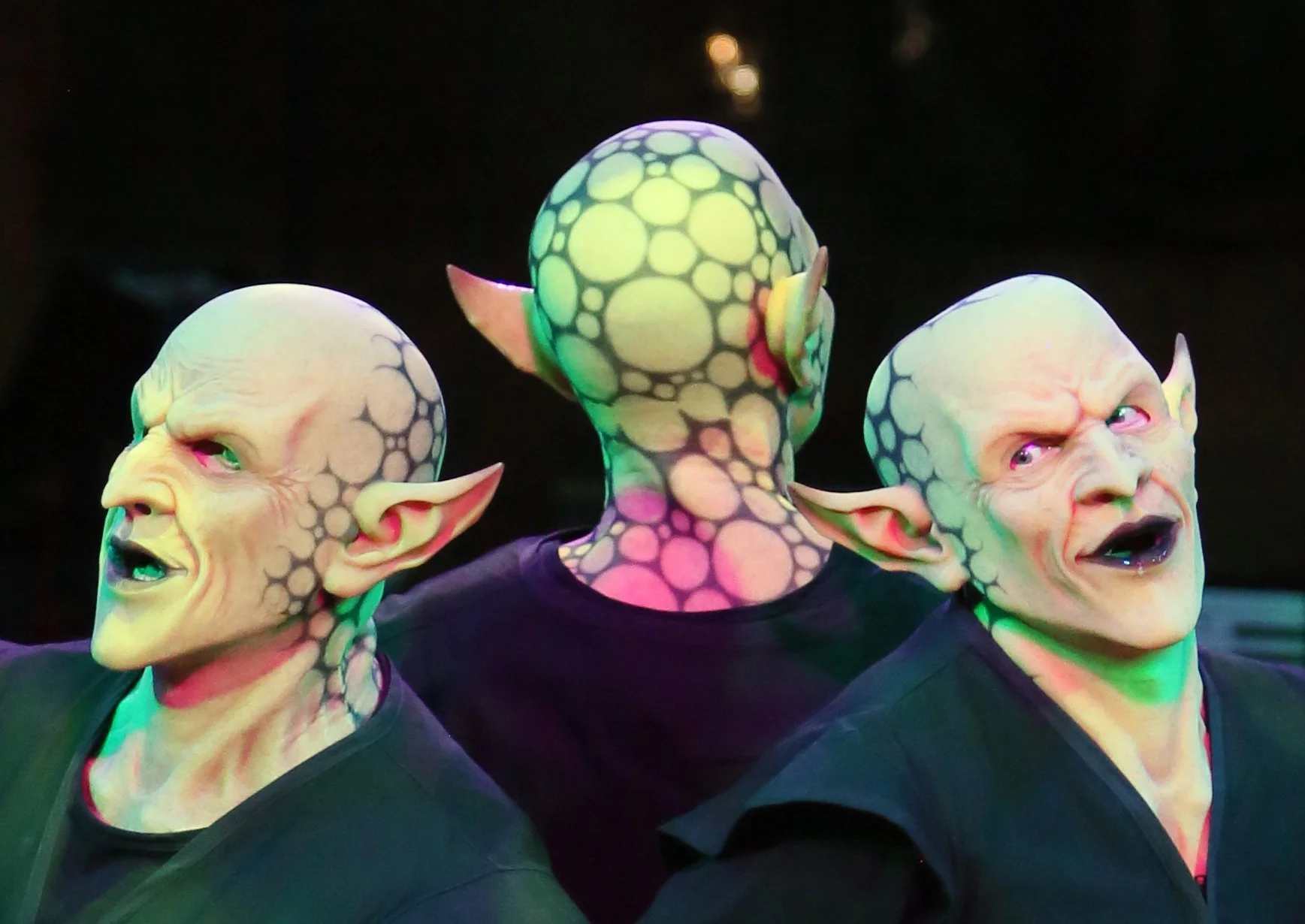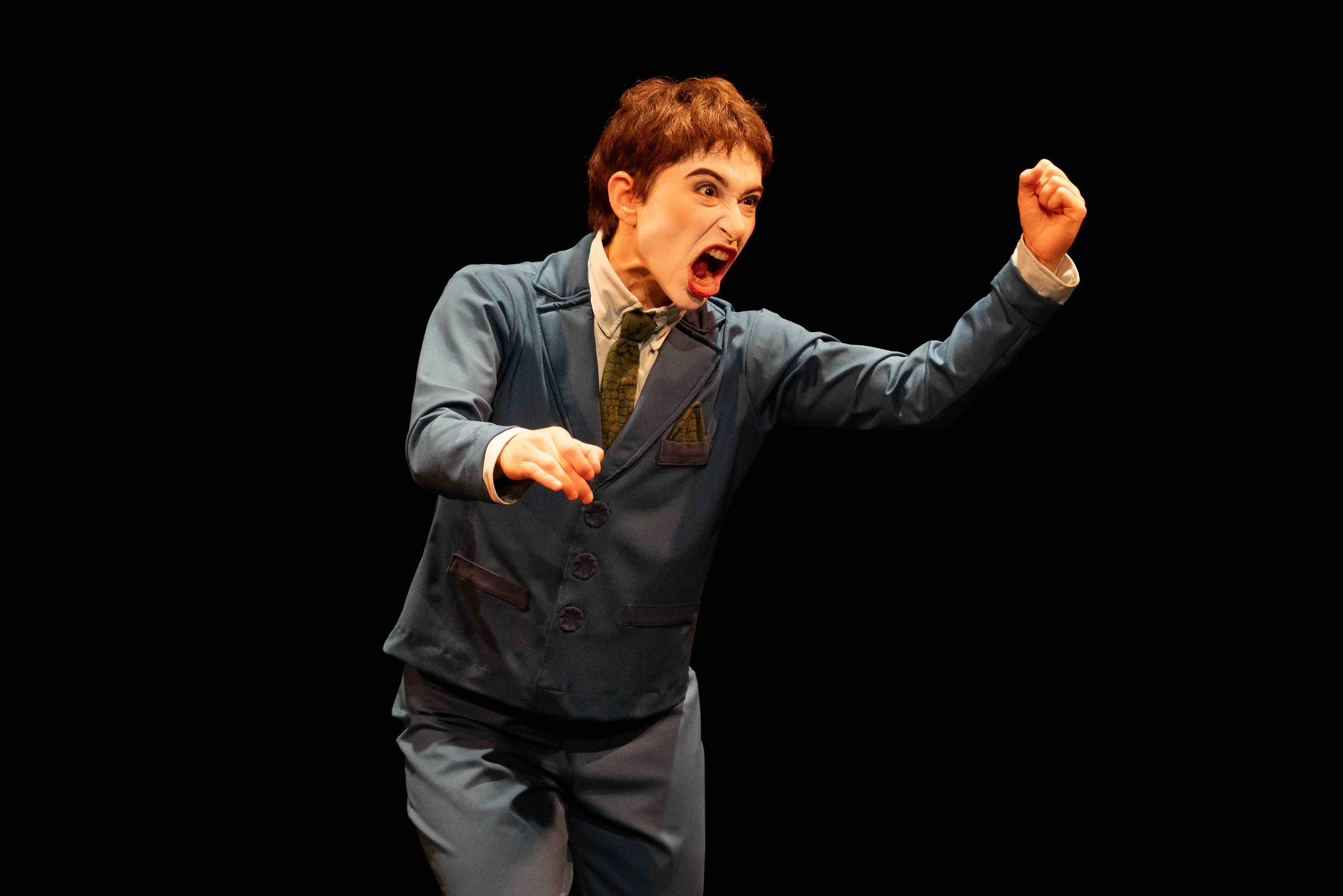Theatre review: In Goblin:Macbeth, three masked, bickering creatures bring daring spontaneity to Shakespearean tragedy
A bullied tech crew, improvised hilarity, and a playful soundscape as goblins dig into the “Scottish Play”
Photo by Tim Matheson
Bard on the Beach presents Goblin:Macbeth at the Howard Family Stage until September 24
A TRIO OF NONHUMAN creatures infiltrates the eager crowd gathering to enter the Howard Family Stage. They move among the attendees, sometimes engaging with them and eliciting a mix of excitement, fear, and curiosity. The bald, pointy-eared entities are none other than the titular characters in this year's Goblin:Macbeth at Bard on the Beach. What distinguishes this production is that the entire play unfolds through the actions of these three fantastical beings. Sustaining a dynamic energy from start to finish, Goblin: Macbeth incorporates inventive comedic choices that add to the allure of its unique premise.
The production starts off with an unexpected proposition—goblins stumbling upon a copy of The Complete Works of Shakespeare. Perplexed by human culture and captivated by the notion of theatre, the curious creatures skim through the texts and land on Macbeth. After coercing members of the actual tech crew into compliance, the goblins embark on an ambitious endeavor: a performance of the renowned “Scottish Play”.
Created by Rebecca Northan and Bruce Horak, the adaptation adds some improvisational elements on top of Shakespeare’s original script. The goblins' bickering, which interrupts with arguments and self-praise before, during, and after the performance, is a big part of the comedy. The meta humour extends to the text as well, including spirited debates about the pronunciation of "scone" to match rhyming schemes. The production also tweaks certain characters in a way that overall lightens the play’s darker themes. For instance, Duncan is portrayed as an aloof eccentric absorbed in tending to his small dog, while his son Malcolm adopts the role of a whiny teenager. Inject a dose of mischievous goblin antics into the mix, and the fusion of these elements, coupled with the impressively realistic monster masks, create an aura of campy unpredictability—all heightened by occasional audience involvement in the action.
In the midst of the shenanigans, the play's more intensely dramatic moments remain faithful to more conventional expectations. Horak and Bard veteran Colleen Wheeler’s vocal mastery play a commendable role here, as the two deliver nuanced portrayals of Macbeth and Lady Macbeth, respectively. These performances remain memorable despite the numerous characters both actors embody, achieved all while wearing the goblin masks, without the ability to convey facial emotions or to rely on visual differentiations, except for the presence of crowns.
Multi-instrumentalist and actor Ellis Lalonde, who portrays the third goblin, also transitions between roles, most notably a whimsically terrifying portrayal of the third witch. Primarily stationed in the background, he heightens the production’s blend of comedy and drama through sound. Lalonde's live musical score and impressive foley include moody accordion accompaniments, comically-timed kazoo melodies for death scenes, and the potent establishment of the play’s eerie atmosphere with a simple rhythmic thump that calls up war drums.
Sparse set design allows the actors to quickly change and define various spaces in the play. The tech crew's involvement extends beyond a cameo in the prologue. Stage manager Lili Beaudoin and lighting designer Michael Hewitt respond to the goblins' bossy cues, orchestrating seamless transitions and shifts in tone. One such transition reaches a peak of hilarity during Macbeth's eerie dinner visions of Duncan's ghost. The production intentionally exposes its seams.
Goblin: Macbeth dances on the edge of chaos, wielding an imaginative premise and a daring commitment to spontaneity. The charismatic masked trio wrestles with Shakespeare's tale, occasionally diving into its shadows, though more often teasing out the text's sardonic humour. The adaptation strikes unexpected chords within the familiar tune of the classic tragedy. Whether it resonates depends on your taste for theatrical mayhem, even during a night of Shakespearean tragedy. Surprisingly, amid its goblin-induced chaos, it should satisfy even the most diehard fans of the Bard.













